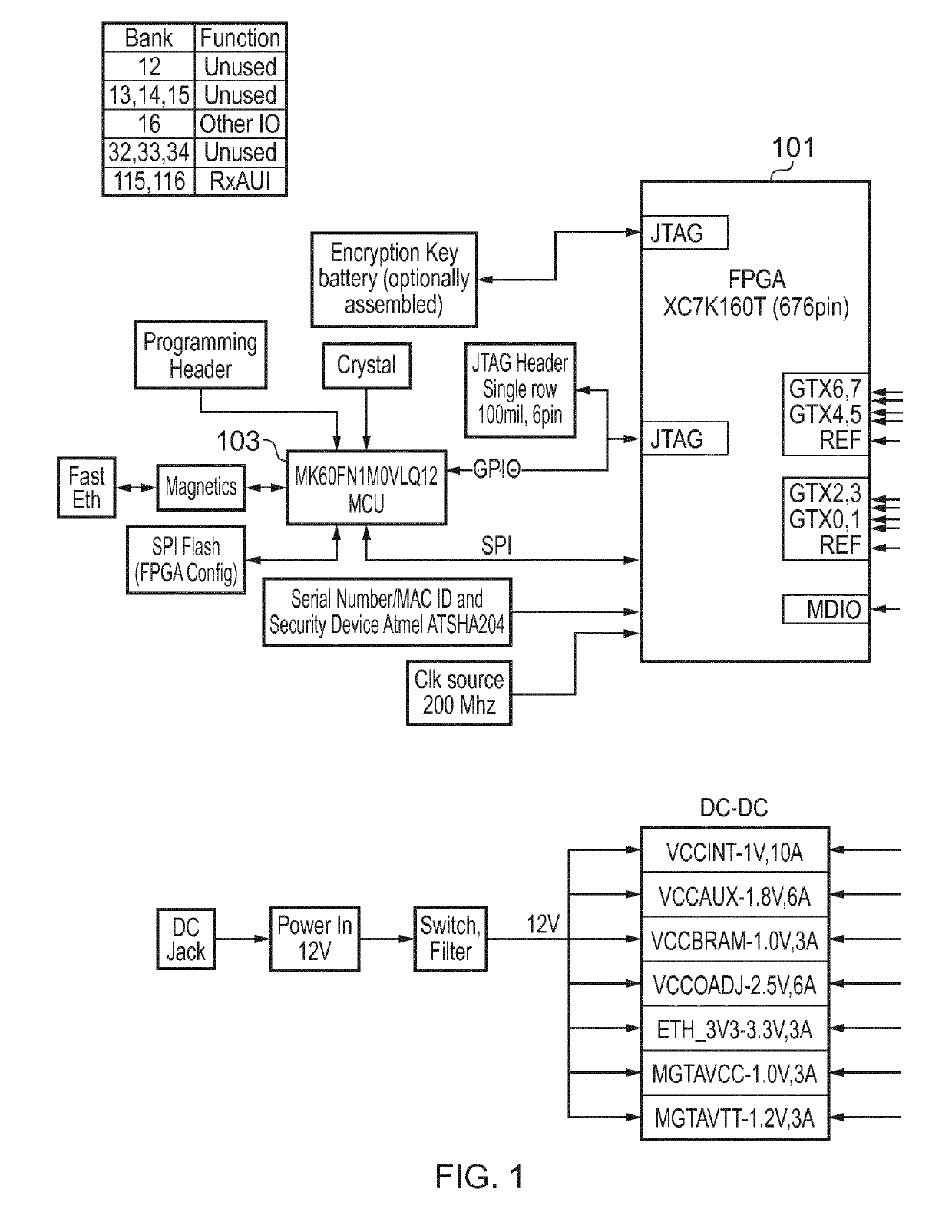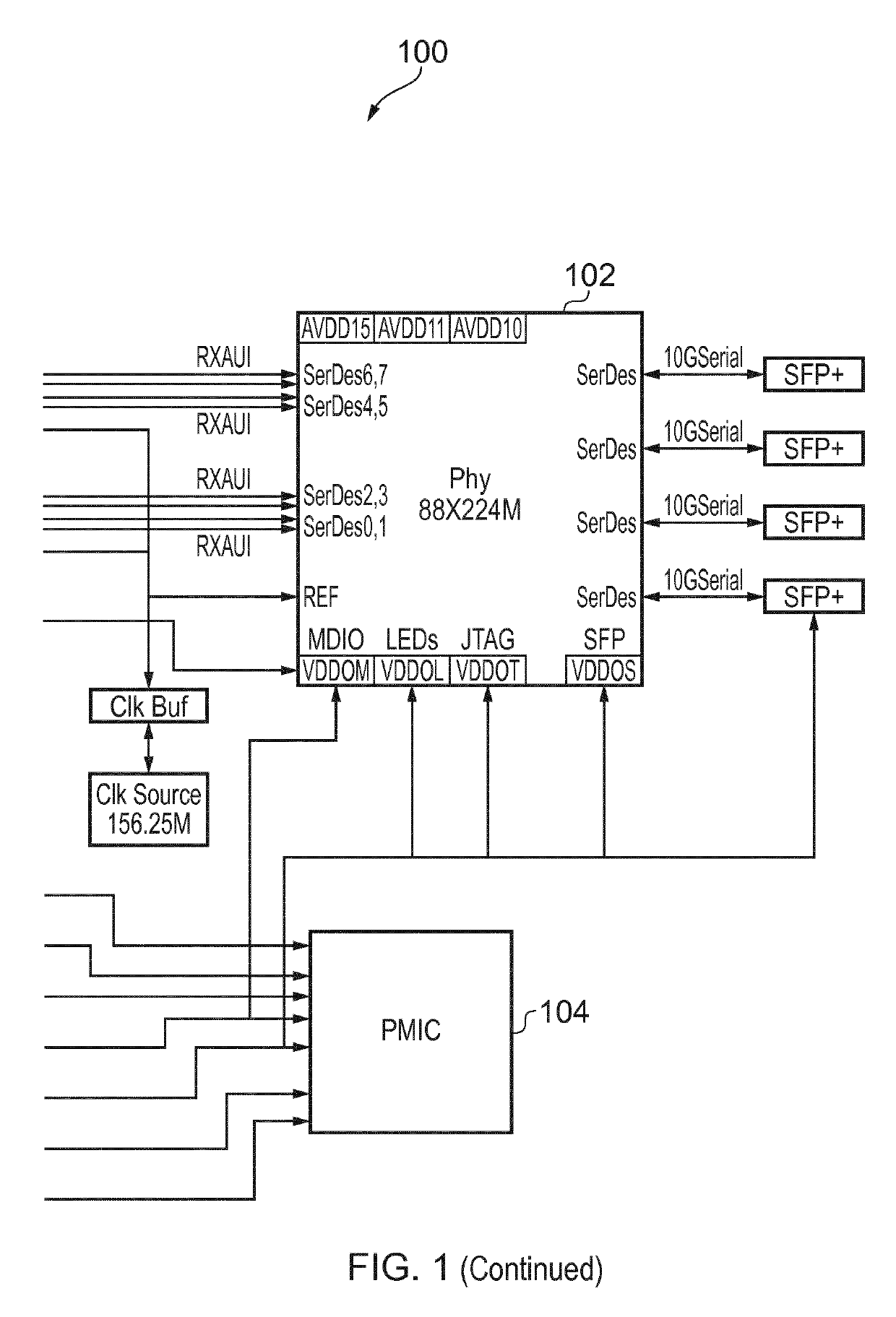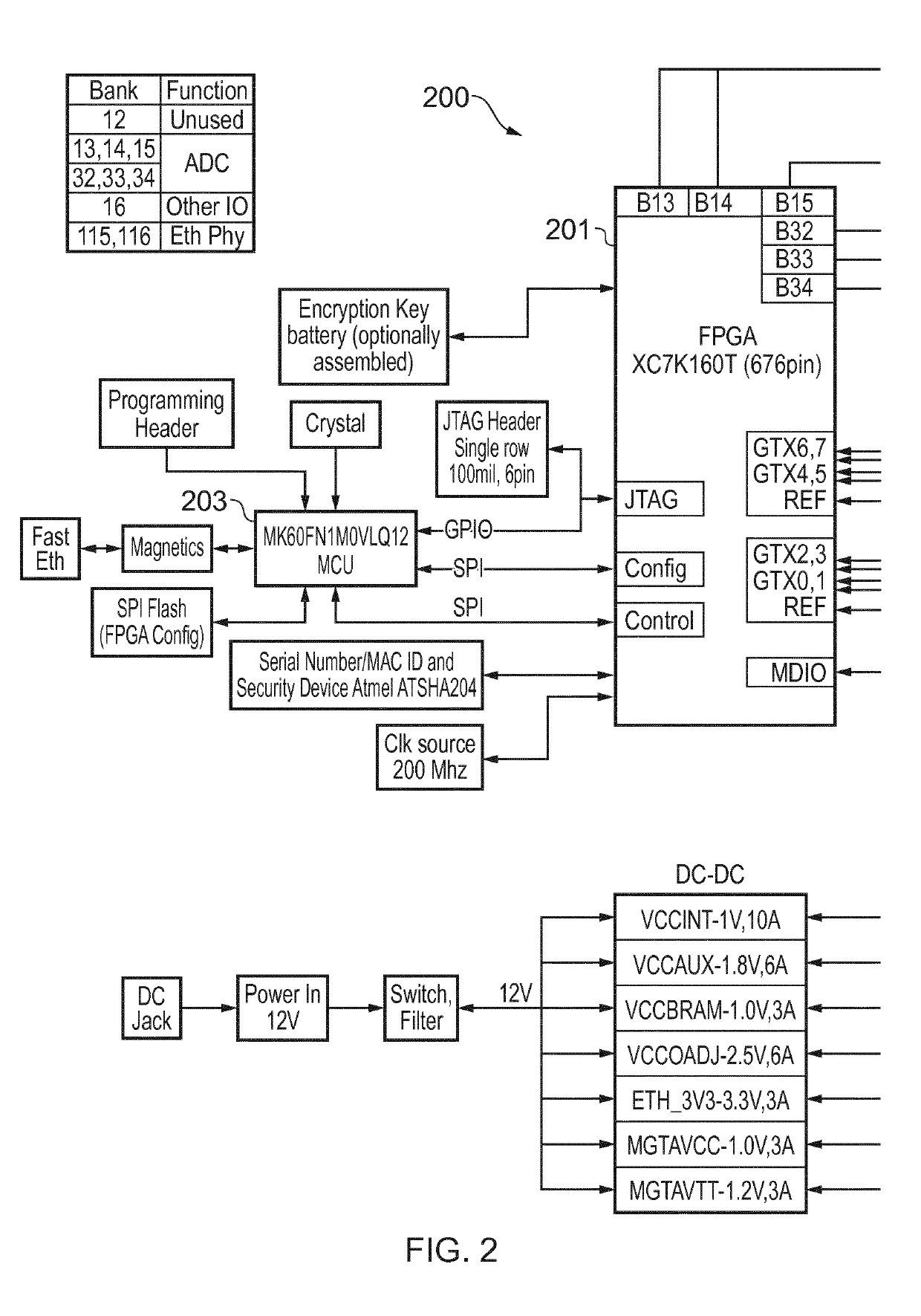High performance computing network
a computing network and high-performance technology, applied in computing, digital computers, instruments, etc., can solve the problems of system processing speed limitation, important software overhead and limitations, schism amongst users, etc., to achieve the highest possible speed, reduce processing delays, and improve processing speed
- Summary
- Abstract
- Description
- Claims
- Application Information
AI Technical Summary
Benefits of technology
Problems solved by technology
Method used
Image
Examples
Embodiment Construction
[0030]As the processing capabilities and power efficiency of FPGAs and ASICs increase, their use in computer systems is becoming more common. In this manner, an FPGA / ASIC based acceleration board is connected to a CPU-centric motherboard, usually within a client or server computer, for offloading computationally intensive parts of an application from the CPU, or for real-time processing of data intended for data acquisition and machine automation. FPGAs / ASICs are connected to the CPU through high-speed backplanes or board-to-board interconnects, e.g. PCI Express (PCIe), as expansion boards. This kind of interfacing introduces hard architectural constraints on scalability.
[0031]Connection through a PCIe bus is an attractive choice for tightly coupled accelerators due to its high throughput capacity. However PCIe is a complicated and expensive interconnect technology. Furthermore because there is no standard host-FPGA communication library, FPGA developers have to write significant am...
PUM
 Login to View More
Login to View More Abstract
Description
Claims
Application Information
 Login to View More
Login to View More - R&D
- Intellectual Property
- Life Sciences
- Materials
- Tech Scout
- Unparalleled Data Quality
- Higher Quality Content
- 60% Fewer Hallucinations
Browse by: Latest US Patents, China's latest patents, Technical Efficacy Thesaurus, Application Domain, Technology Topic, Popular Technical Reports.
© 2025 PatSnap. All rights reserved.Legal|Privacy policy|Modern Slavery Act Transparency Statement|Sitemap|About US| Contact US: help@patsnap.com



